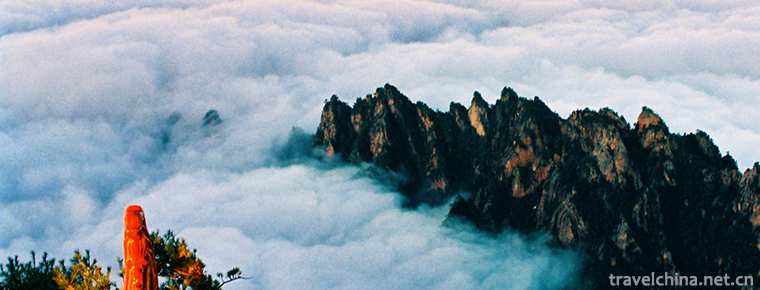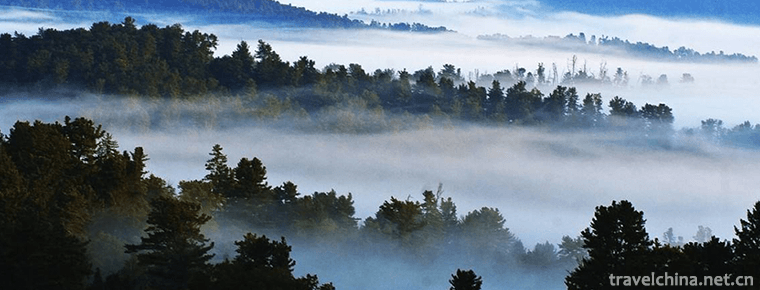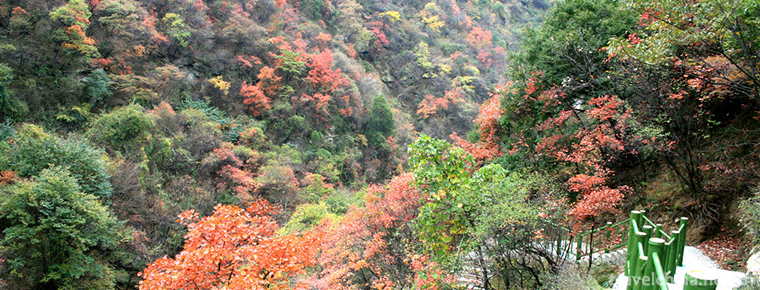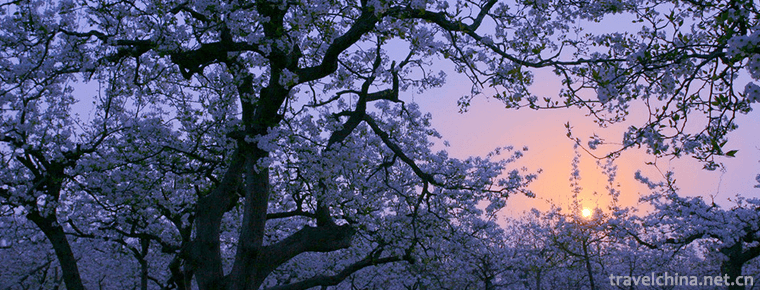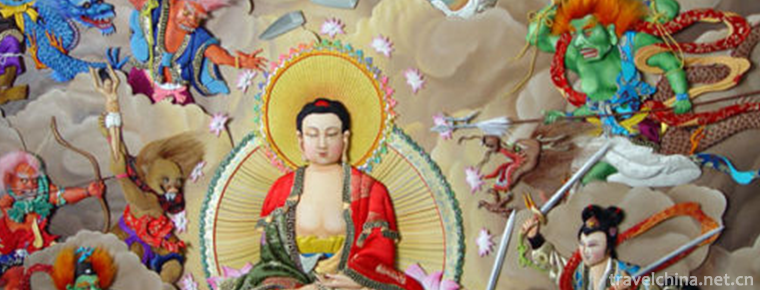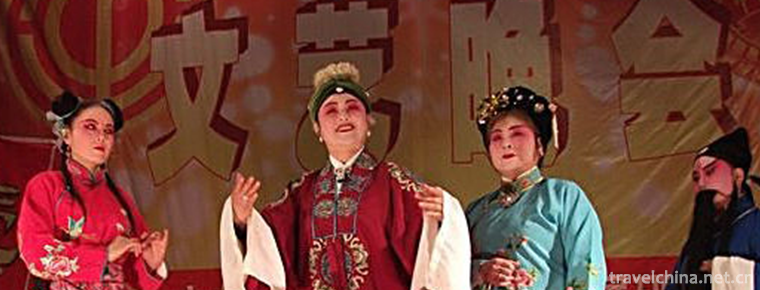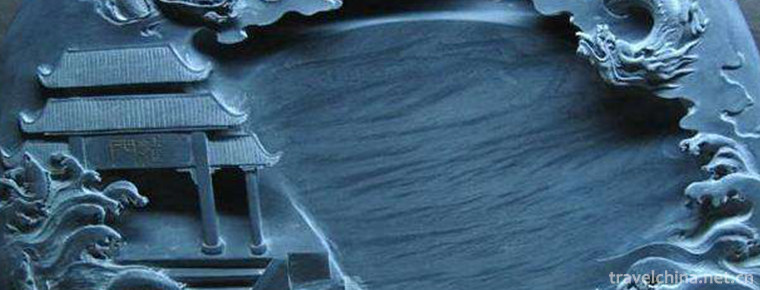Song of Sichuan river
Song of Sichuan river
Chuanjiang chant is a kind of traditional folk singing form that the shipworkers in Chuanjiang valley of Sichuan and Chongqing area lead the singing by the trumpeters for unified movement and rhythm, and all the shipworkers help the tune and chorus. Eastern Sichuan and Chongqing are the main birthplaces and inheritance sites of Chuanjiang Chanzi.
On May 20, 2006, Chuanjiang Nobel was approved to be listed in the first batch of national intangible cultural heritage list.
Brief introduction
Chuanjiang Chanzi is mainly distributed in Jinsha River, Yangtze River and its tributaries Min River, Tuo River, Jialing River, Wujiang River and Daning River basins. In this area, the waterway is tortuous, the mountain is steep, there are many water shorts, and the whole water level drop is large. Especially when the Three Gorges are in danger of going out of Chongqing, the shipworkers are facing difficulties. Chuanjiang Chanzi came into being in this special geographical environment.
Chuanjiang Channel includes Shangshui Channel and Xishui Channel. Shangshui chant includes pole chant, radial chant, mast chant, sail chant, pull-fibre chant and so on. Shangshui chant includes tow chant, sail chant, level water chant, second-rate raft chant, fast second-rate raft chant, two-three-way junction chant, see beach chant, rush beach chant, lower beach chant and so on. As a result, dozens of kinds of chant and thousands of music articles have been formed. Change.
historical origin
In Bashu, mountains overlap, rivers run across, traffic is inconvenient, cargo circulation, passenger transport, all need wooden boats to carry passenger cargo, so cypress sailboats become the main means of transport, small boats have several shipworkers, the larger has twenty or thirty shipworkers. Fuweng, also known as the captain of a ship, is the owner of a ship. All the boatmen are under the command of Fuweng. During the Ming and Qing Dynasties, the ship was commanded by Fanweng, who beat drums as the number, and the radial rhythm was unified. Only in the middle of the Qing Dynasty did the chant gradually arise, producing a special chant.
According to the water potential and water quality of rivers, the danger of open beach reefs to boating, and the working rhythm of rolling the radial, some chants with different rhythms, different tones and different emotions are created. For example, when a boat goes into water or level water, it is necessary to sing "Moyo horn", "Radial horn", "Second-class rolling horn", "Dragon boat horn". Such horns are melodious in tone, slow in rhythm and suitable for the slow action of pulling the radius. They are also the labour and leisure adjustments for the physical energy of the boat workers after the strenuous work of crossing the beach and reef. When crossing the beach, they sing "lazy big radius horn", "rise-back horn" and "chicken pecking rice horn". The pitch of the trumpet is strong and intense, and it has a strong working rhythm, so as to meet the needs of sailing on the beach. When the boat goes to the water to pull the fibre, it should sing "big turtle dove trumpet", "No. 23 trumpet", "catch the trumpet", "bubble trumpet". Such trumpets are generally melodious, and the boatmen are tired when pulling the fibre, forming a musical feature to alleviate tension, unify footsteps and concentrate strength points. In dangerous beaches, we should sing the "winch horn", "plus horn". Such horns are characterized by strong and strong tones.
artistic characteristics
There are four kinds of cavity types in the number plate, lazy big radial number plate, lifting and complex radial number plate, fast second-rate number plate and landing cavity number plate. Among these tunes, the leading part of the trumpet, rhythm has changed in the norm, the small tune is used more, with some improvisational elements, so there are ten different opinions, but on the whole, it has a magnificent and exciting tone, and a melodious Lyric melody. It plays the role of unified swing action and adjusting the boatmen's rush mood in sailing. It brings a little joy to the poor boatmen in the environment of facing water and facing the sky.
According to records, there are 26 kinds of word cards and more than 100 lyrics in Chuanjiang Channel, which are very rich and colorful: many kinds of "number board" lyrics are often improvised by the Channel Head (the boatman who sings the chant). According to his voice, Channel Head can be divided into different schools, such as Hongliang thick "big cylinder" and high-pitched crisp "side tone". According to the speed of the water, the name and tone of the trumpet are different. Sometimes it is slow and melodious, sometimes it is tight and high, sometimes it is strong and powerful, and it is very impressive. For thousands of years, these chants have been handed down and formed a long-standing tradition, so Chuanjiang chants are also known as the "living fossil of the Yangtze River culture".
Representative works
Chuanjiang Channel is rich and colorful, and its representative repertoires are "Eighteen Pulls", "Balang Huiying", "Guijie Xiushu", "Quexing Tower", "Laxian Channel", "Cable Catching Channel", "Shu Channel", "Place Channel", "Big Turtle Dove", "Little Turtle Dove", "Lazy Dragon Channel", "Lie Eucalyptus Channel" and "Adverse Water Number Plate".
Lazy Dragon
When pulling a boat to the beach. At this time, the leader was standing on the boat and singing, while the fibre puller was in harmony on the shore. The lead singer is also the command order, so that people can pull the boat to the beach together. Its lyrics change with the situation of pulling fibers, and its songs also change with the lyrics. The music is melodious and full of emotional power.
Out of the Turtle Dove
It is used for the sprint before the boat is about to finish on the beach until it enters the level water area and rests on the shore. The leader has a short, fast and powerful rhythm without words. Its correspondence with the harmony is almost "shout" and "roar". Atmosphere and mood are at their peak, which can be said to be thrilling and stirring.
Reverse Water Number Board
It is used to unify the stride and strength of the tracker when the ship is retrograde in the mainstream. Most of them are pulling "tripods". Its form of shouting is that big and small trumpets take turns to lead the shouting, and people should answer at the end. Its lyrics generally use the original words in opera. The leader's voice was clear and long, and the public's response was rather dull.
The slogan of the mast
One or two people led the call and everyone responded accordingly. It is used to erect the mast before sailing so as to hang sails and pull fibers. The chant has no lyrics or less lyrics, so why do you shout? Its special stink is slow singing of lyrics and slow rhythm, fully demonstrating the full spirit of the trackers after recuperation.
historical value
The chant lyrics are also very rich, often compiled on the topics of place names, property, history and human landscape along the river, which is rich in knowledge. For example, "There are famous halls on both sides of the Sichuan River". When singing chants, the beaches along the Yangtze River are all included in the lyrics. The old Fuweng and Chantou sailed in the Yangtze River for a long time, regardless of the fluctuation of water, the open reefs and hidden forts along the river, the speed of water flow, keep in mind, accumulated rich knowledge of boating, and ensured the safety of boating. Therefore, in the past, Minsheng Shipping Company, Qianghua Shipping Company, China Merchants Bureau, etc. invited some young and energetic Puweng and Hao Zitou who are very familiar with the water quality of Chuanjiang River to train their ship knowledge, and then sent them to the ship to serve as sailors and pilots, and then promoted them to leading rivers and captains.
Chen Banggui, a master of Bashu Folk Art, began to work as a Shipman at the age of 13. He learned Chuanjiang Chant from Peng Shaoqing, a well-known scholar. His singing was praised as "authentic taste of Chuanjiang Chant" by his colleagues. In his view, Chuanjiang Channel is both technology and art. "At that time, the ship was pulled by people, the driver was like the steering wheel of the car, responsible for the direction of the ship; the channels were like the throttle of the car, controlling the speed of the ship." Therefore, the horn can adjust the strength of the Shipman through its rhythm, so that the ship can move smoothly. At the same time, singing the trumpet pays attention to the bright voice, good tune and beautiful sound, therefore, "it is also an art".
Peng Xiaogang, 77, who has been engaged in the research of Chuanjiang Chant and is compiling "Chongqing Civil Song Integration", believes that the change of Chuanjiang Chant from time to time, which can not only relieve the depression, express emotions and regulate the body and mind of the shipworkers at that time, but also absorb some elements of these operas because most of the shipworkers are theatre enthusiasts. Therefore, it becomes a miniature of Sichuan folk songs and has high artistic value. "Chuanjiang horn is a musical and beautified command."
The scholar Lianbo wrote in his book "The Fragrance of National Music": Chuanjiang Shipman's Chant is like a concentrated emotional world, and Chuanjiang Shipman's Chant has become an important part of Chinese traditional music and culture.
Inheritance significance
Chuanjiang Number One has a very long history and is the most distinctive among Chuanjiang and Chongqing Labor Numbers. Sichuan and Zhouzhi have been advantageous since ancient times, which has been recorded in many historical books of past dynasties. In recent years, cultural relics such as the Neolithic Stone Anchor and the Eastern Han Dynasty Drawing Fiber Terracotta excavated along both sides of the Yangtze River confirm the long history of the waterway transportation industry of the Sichuan River. The human geography, local customs, natural scenery and the custom of assisting workers with songs on both sides of the Sichuan River are enduring themes in both folk songs and poems of literati such as Du Fu and Li Bai. Academic circles generally believe that Chuanjiang Channel is a cultural treasure in the history of Yangtze River waterway transportation. It is a song of life cast by sailors'blood and sweat when they fight against dangerous beaches and rivers. It has the characteristics of long history, rich categories of songs, high-pitched tunes, a leading audience and apprenticeship songs. Its existence reflects the perseverance of the working people in all basins of Sichuan River in the face of the dangerous natural environment since ancient times, and the characteristics of humour in their rugged heroism. At the same time, in the form and content of music, its development is also relatively perfect, with cultural and historical value.
However, with the popularity of motorized iron boats and the operation of man-powered boats in some mainstream bays and tributaries, the foundation of survival and development of Chuanjiang Channel has begun to shake, coupled with factors such as inheritance and fracture, Chuanjiang Channel is facing an endangered predicament. Rescuing and protecting the Chuanjiang Chant will play a positive role in enriching and developing the Chinese water system music culture and even the world water system music culture.


-
Old boundary ridge of Funiu Mountain
Laojieling is located in the north of Xixia County, Nanyang City, Henan Province. It is located in the upper part of the south slope of Funiu Mountain.
Views: 131 Time 2018-12-09 -
Shangganling Xishui National Forest Park
Shangganling Xishui National Forest Park combines the strong local flavor and exotic style with the elegance of "paradise". It has both unique natural landscape and distinctive humanistic la.
Views: 383 Time 2018-12-19 -
Harbin Jinyuan Cultural Tourist Area
Harbin Acheng Jinyuan Cultural Tourist Area, the capital of Jin Dynasty from 1115 to 1234, is the only well-preserved capital site of Jin Dynasty. Up to now, the Royal City's Wumen Gate and palace bui.
Views: 512 Time 2019-01-13 -
Shaohuashan National Forest Park
Shaohuashan National Forest Park is located at the north foot of Qinling Mountains, 5 kilometers southeast of Huaxian City, Shaohuafeng in the west, Lilongshan in the east, Qinling main ridge in the s.
Views: 122 Time 2019-02-08 -
Saint Sophia Cathedral in Harbin
St. Sophia Church is located in Sophia Square, Daoli District, Harbin City, Heilongjiang Province, China. It is a Byzantine-style Orthodox Church built in 1907.
Views: 170 Time 2019-02-08 -
Xia Jin Old Yellow River Forest Park
The forest park scenic spot of the old Yellow River in Xiajin is the ruins of the old Yellow River. It is a national AAAA-level scenic spot. It is located in Xiajin County, Shandong Province.
Views: 382 Time 2019-02-25 -
Pile brocade
Duijin, also known as Shangdang Duijin, is a handicraft hand Duijin is developed on the basis of traditional Chinese painting and embroidery. It is made of silk as the main fabric.
Views: 136 Time 2019-04-28 -
Xihe Opera
Xihe Opera, also known as Xingzi Xihe Opera, is a traditional opera popular in Xingzi, De'an and Jiujiang counties and cities of Jiangxi Province. Its main vocal cavity is Pihuang, also known as ".
Views: 124 Time 2019-07-01 -
Inkstone making skills
Inkstone making skills, local traditional handmade inkstone making skills in Shexian County of Anhui Province and Wuyuan County of Jiangxi Province, is one of the national intangible cultural heritage.
Views: 139 Time 2019-07-01 -
Cultural undertakings in Luzhou
By the end of 2017, Luzhou had 8 cultural centers and 142 cultural stations, including 128 Township comprehensive cultural stations, 14 urban community (street) cultural centers, 9 public libraries, 2 art galleries and 13 museums (memorial halls), all of which are free of charge..
Views: 322 Time 2020-12-14 -
Location of Yibin
Yibin City is located in the south of Sichuan Province, at the junction of Sichuan, Yunnan and Guizhou provinces, and the confluence zone of Jinsha River, Minjiang River and Yangtze River. It spans 27 ° 50 '- 29 ° 16' n and 103 ° 36 '- 105 ° 20' E. The cit.
Views: 363 Time 2020-12-18 -
Dazhou environmental protection
In 2019, the afforestation area of Dazhou city is 11666.60 hectares, the forest area is 735300 hectares, and the forest coverage rate is 44.34%. The air, water and soil pollution prevention and control were carried out in depth. The air compliance rate .
Views: 95 Time 2020-12-20
